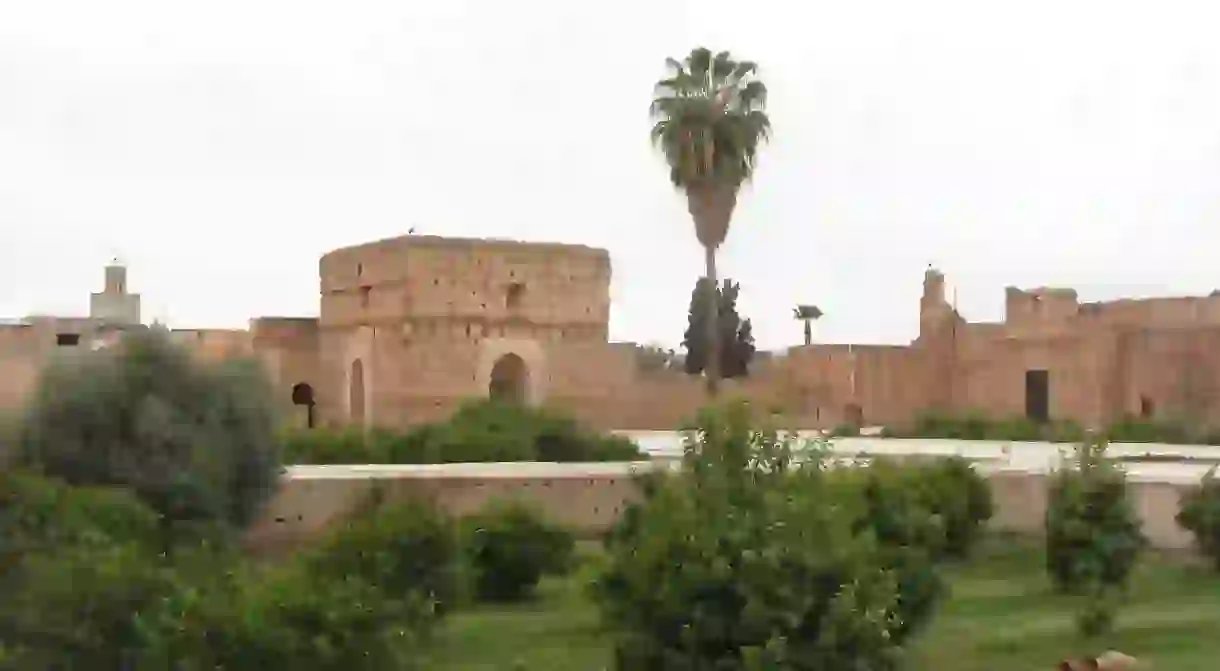A Brief History of Marrakesh's Badi Palace

A fascinating piece in Marrakesh’s historical jigsaw, El Badi Palace is a popular tourist attraction for visitors to the Red City. In contrast to the well-preserved Bahia Palace, El Badi is a shell of its former self. Although the former grand palace stands largely in ruins today, stripped of all its former beauty, it is still easy to take a journey back in time and imagine the splendour of the palace’s heyday.
An unrivalled place of royalty built on the back of war
El Badi Palace’s name alone conjures up an image of past grandeur, as it means ‘the incomparable’. The palace dates back to the late 1570s. It was built on the order of Ahmed el Mansour, a Saadi sultan who came to power in 1578. The funds came from the Portuguese, following their defeat at the Battle of Alcacer Quibir, a battle that also saw the death of the previous sultan.
The Battle of Alcacer Quibir is also often referred to as the Battle of the Three Kings, due to it claiming the lives of three kings from different nations. A previous Moroccan king, Abu Abdallah Mohammed II, teamed up with the Portuguese king, Sebastian of Portugal, to fight against the then-leader of Morocco, Abu Marwan Abd al-Malik I. All three died, and the Portuguese were defeated. They paid a large ransom, which the new king used to build El Badi Palace.

A palace that lived up to its name
The enormous royal residence took approximately 25 years to construct. The palace is believed to have contained more than 350 opulent rooms, in addition to a large pool, sweeping courtyard, and several gardens. Other palace features included summer pavilions, dungeons, and stables.
No expense was spared when it came to sourcing the finest materials, with gold, Italian marble, onyx, ivory, and cedar wood among the construction materials. Master craftsmen and artisans from around the globe were employed to create marvellous designs, with the El Badi once showcasing some of the greatest decorative elements from the Saadi era. Each room was lavishly adorned with beautiful, and expensive, touches of luxury.

A lavish opening with a chilling prophesy
Prominent leaders from around Morocco attended the palace’s official opening, as well as a number of major European dignitaries. Most visitors were dazzled and awed by the brilliant palace, with some accounts claiming some guests described El Badi Palace as the ‘Eighth Wonder of the World’.
One of the most famous anecdotes from the opening ceremony, however, concerns the words of the court jester. When asked what he thought of the gleaming marvel, he is said to have replied that the palace would ‘… make a magnificent ruin’.

The decline and devastation of El Badi Palace
A civil war broke out in Morocco after the death of Ahmed el Mansour in 1603, with conflicting opinions of who should become his successor. Tensions lasted for almost 25 years, during which time the decadent palace started to fall into decay. Weaknesses in the Saadi dynasty allowed the Alaouites to rise to power, with Moulay Al-Rashid becoming sultan in 1666. His short reign lasted for just five years, after which his half-brother, Moulay Ismail, came to power.
Moulay Ismail gained notoriety for destroying the grand buildings in Marrakesh, taking the riches to Meknes to construct his own palaces and significant sites. El Badi Palace wasn’t spared. It was taken apart and stripped of all its splendour over a 12-year period, with the exquisite materials reused to build the royal palace in Meknes.
The court jester’s words became true: El Badi Palace did, indeed, make a magnificent ruin.













